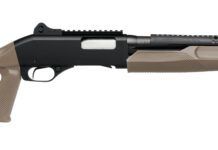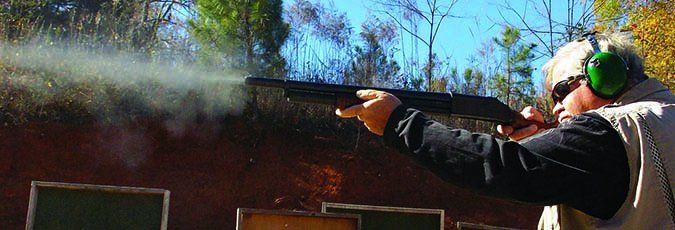
The 12-gauge shotgun remains the most effective home-defense weapon available. While some prefer the handgun for convenience or the 223-chambered rifle for low recoil, all give a nod to the awesome power and simplicity of the pump-action shotgun. The shotgun is also the most common home-defense weapon for non-firearms-passionate individuals. Everyone should learn to use a tool well. But the home-defense shotgun is often treated with the same respect and purpose as the spare tire and jack in the vehicle. If we need it, it is needed badly, but otherwise we tend not to think about it. Non-gun folks, including far north aviators and sailors, keep a shotgun handy just in case they have to deal with angry animals or bad people. As long as the pump-action shotgun is in good repair and functions well, the exact choice may not be as important as the terminal ballistics. But there are differences in handling that are interesting, and every advantage should be taken.
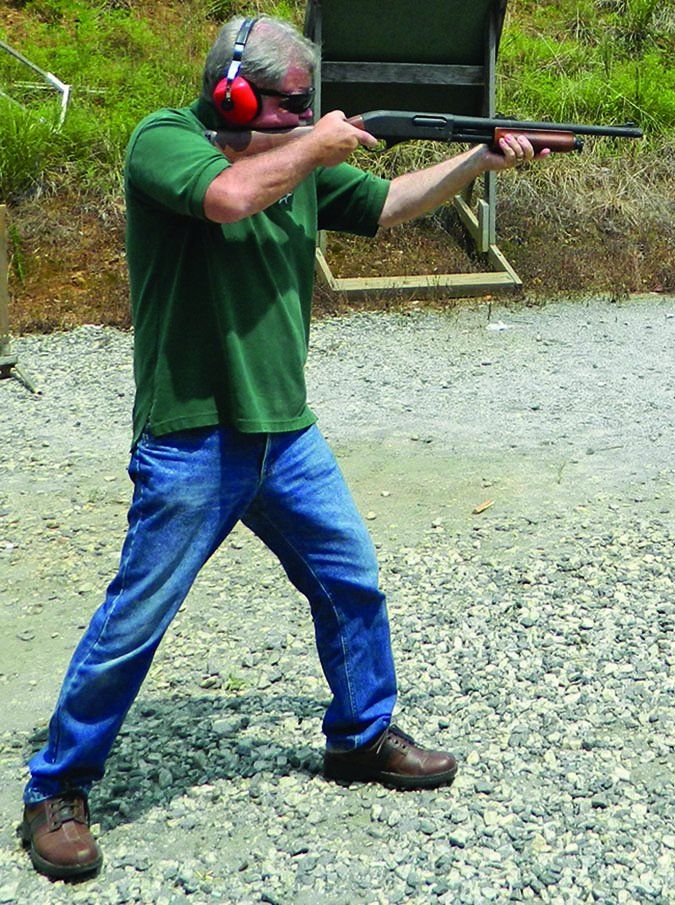
We decided to look at the subject of a number of reader requests for reports on affordable pump-action shotguns. Some used guns are out of production, and others are earlier versions of popular shotguns. Some are just used and only a few months old.
We picked two popular shotguns, including one of the most popular ever made, the Remington 870. We found a used Remington pumpgun stamped “Mobile Police Department” for $225 at Scgunco.com. We counted this as a good deal. It’s very similar to a shotgun Remington still offers through its law enforcement side, the 870P Standard pump action.
We also found a used Norinco Wild Bunch shotgun for $299 at the same outlet. It was as new and also counted a good buy. But that isn’t the whole story—they were purchased months apart, one for a backup truck gun and the other as a Wild Bunch Cowboy gun. Naturally, they were thrown together by the raters from time to time, and the question came up about how suitable the Wild Bunch gun was for home defense. The owner answered by saying it was already his favorite home defender despite a safe that held more-modern guns.

When you are looking at older pump-action shotguns, the concerns include maintenance, supply of parts, and perhaps ergonomics. When you look at the handling of the shotguns and the sights, well, it is what it is. There are a few add-ons for the Remington, but we might as well purchase a more highly developed shotgun in the beginning if that is what is desired. So, we stuck with the shotguns as issued and took at hard look at each for personal defense. The results were interesting, and in the end we respect both shotguns, but have greater respect for just one.

Remington 870P 12 Gauge, $225
GUN TESTS GRADE: A (Best Buy)
This is a simple, economical shotgun that works well. The patterns were good, and some experimentation may find a load that offers even better performance. The 870 performed well and gets a solid recommendation as a home-defense shotgun.

| ACTION TYPE | Pump |
| OVERALL LENGTH | 38.25 in. |
| OVERALL HEIGHT | 3.25 in. |
| CAPACITY | 4+1 |
| WEIGHT UNLOADED | 6 lbs. |
| WEIGHT LOADED | 6.9 lbs. |
| BARREL LENGTH | 18 in. |
| BARREL | Steel |
| CHAMBER | 2.75 in. |
| CHOKE | Fixed cylinder |
| ACTION | Steel |
| STOCK | Wood |
| FOREND | Wood |
| SIGHTS | Bead front post |
| TRIGGER PULL WEIGHT | 4 lbs. |
| WARRANTY | None |
| PHONE | (800) 243-9700 |
| WEBSITE | Remington.com |
| MADE IN | USA |
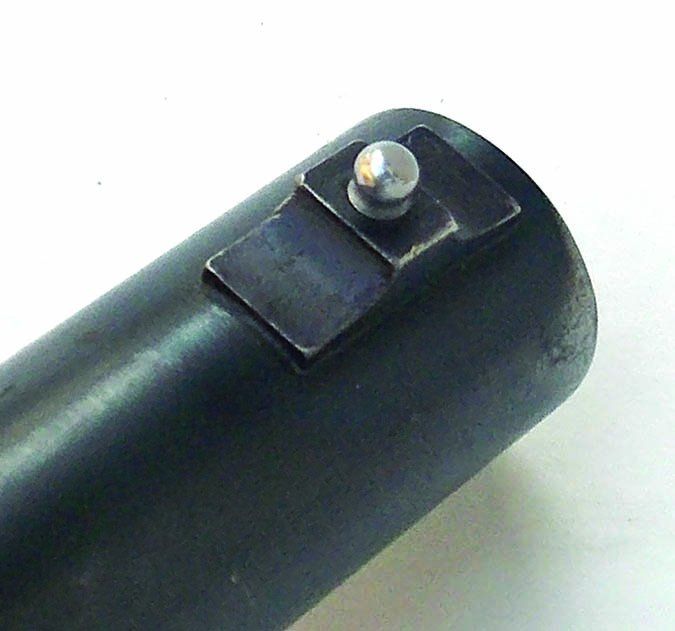
We purchased this used at Scgunco.com. The Remington is a clean design. There is nothing extraneous on the shotgun or the stock. The metal receiver is blued steel and so is the barrel. There were the usual freckles and light rust in the finish. There was one small dent in the receiver, typical of police trade-in shotguns. The wood showed no dents or large chips, and the cocking serrations on the forend were in good condition. We examined the knurled nut that holds the action together, and it was also in good condition. The action was smooth, typical Remington 870. The front bead sits atop a post. The receiver is milled in the top. This almost allows a form of sighting or at least alignment. There is no provision for mounting a red dot or optical sight. (Modern Remington shotguns are a different matter.) We tried the action before purchase and found the straight-to-the-rear pump action was free of binding.
The shotgun had been cleaned and was in overall very good condition. When we tested the trigger action, we found it broke at an even 4.0 pounds. The shotgun is lighter than some other shotguns we have tested, as the raters noted during the initial evaluation. The Remington 870 breaks the scales at 6.0 pounds. As a comparison, a Remington 870 with Adaptive Tactical AR-type buttstock and Wraptor forend with light weighed 7.6 pounds. During dry fire, we found the 870 handles quickly and is fast to get on target. The front bead sight is adequate for centering the pattern on a target at typical engagement ranges of 5, 7, and 10 yards. While 10 yards is useful for evaluating a shotgun, few homes will have a 30-foot hallway.
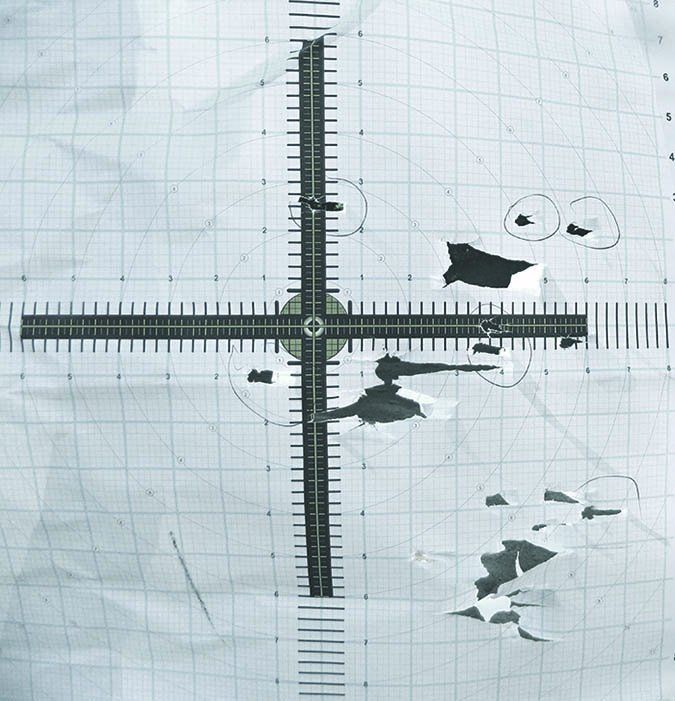
The major makers offer several choices of home-defense buckshot. We chose Hornady and Federal 12 gauge loads. We used Federal 2-inch 00 buckshot ($5.67/5 shells from CheaperThanDirt.com) and Hornady Critical Defense buckshot ($12.71/10 shells from Brownells.com). We used the Federal TruBall slug ($3.79/5 shells from SportsmansGuide.com) and the Hornady American Gunner slug.($6.49/5 shells Brownells.com) The plan was to fire five buckshot shells of each loading at 5, 7, and 10 yards. We would pattern the average of each load on a single piece of paper as well. We also fired for speed, firing 25 buckshot shells in each shotgun. The last test would be to fire slugs for a pattern at a long 15 yards.
We summarize our target results here: At 10 yards, the Remington loaded with Federal 2-inch buckshot produced a pattern of 6×6 inches compared to the Norinco’s 4×5-inch pattern. With the Hornady Critical Defense, the 870 fired a 4.5×3-inch pattern compared to the Norinco’s 6×5-inch hole. In terms of point of impact, the Remington shot to point of aim, whereas the Norinco shot 4 inches high.
Using slugs at 15 yards, the Hornady American Gunner fired groups of 2.0 inches in size in the 870 and 1 inch (basically one hole) in the 1897, with the 870’s point of impact hitting 2 inches right and the Norinco hitting 3 inches high. With the Federal TruBall slug, the Remington fired groups of 1.9 inches compared to the Norinco’s 1.2-inch groups, with the Remington hitting 1.5 inches right and the Norinco 2 inches high.
While this is further than any conceivable home-defense range, some use the shotgun for area defense, and the shotgun should be viable for defense against large animals if used as a truck gun or camp gun.
The Remington was loaded with four buckshot shells, full capacity, in the magazine. The Remington 870 was held at low ready and brought up to the shoulder. We racked the shotgun and made it ready, simulating a home-defense situation where the shotgun should be kept ready with the chamber empty. After firing four shells, a fifth was quickly dropped in the chamber and fired, simulating a popular tactical drill. We also loaded the shells into the tube quickly for the last two sets, comparing the shotguns’ ability to be quickly reloaded. The rubber recoil pad supplied with the shotgun kept recoil from being painful, but recoil is heavy even with loaded-down personal-defense loads. Just the same, the most important shot, the first one, was well centered. Fast follow-up shots were good as we shucked the pump-action and took aim. Four fast shots with a 6-pound shotgun gets the measure of any shotgunner.

We rotated raters between the shotguns. It would not have been fair to take a man that had fired 25 buckshot loads and then shove another shotgun his way to repeat. Cumulative recoil, and a sore shoulder, would have affected the rating. Sometimes a rater began with the Remington and sometimes with the 1897 shotgun. The final test was firing offhand with the slug loads. The table at the end of the report enumerates ammunition performance.
It is important that the shooter learns how to unload the shotgun and make it safe if a round is chambered and not fired. With the Remington, a release lever in front of the left side of the trigger guard unlocks the bolt. The bolt is pumped slightly to the rear and the chambered shell is removed and caught in the hand. The shell in the magazine follower is pressed down and the bolt closed over an empty chamber. This was smooth enough. The safety is a pushbutton type. Never reach through the trigger guard to place the piece on safe, but rather reach behind the guard. The trigger finger has no difficulty in quickly actuating the safety by moving the shotgun safety to the left and off safe.
Our Team Said: The Remington gave good results. The action is smooth, there were no problems encountered, and the pattern was tight enough for good results.
(IAC) Norinco Wild Bunch Shotgun 12 Gauge, $300
GUN TESTS GRADE: B
The Model 97 copy is an iconic design that has much appeal to those with a sense of history and emotional attachment. We found the shotgun reliable, save for an odd malfunction. Tactically, the design leaves some other shotguns in the dirt. It is fast to load and even faster to empty the magazine by simply holding the trigger as you pump the action. While the Wild Bunch shotgun is a formidable home defender, its idiosyncrasies in handling and design put it in second place.

| ACTION TYPE | Pump |
| OVERALL LENGTH | 39 in. |
| CAPACITY | 5+1 |
| WEIGHT UNLOADED | 7 lbs. |
| WEIGHT LOADED | 8 lbs. |
| BARREL LENGTH | 20 in. |
| BARREL | Steel |
| CHAMBER | 2.75 in. |
| CHOKE | Fixed cylinder |
| ACTION | Steel |
| STOCK | Wood |
| FOREND | Wood |
| SIGHTS | Bead front post |
| TRIGGER PULL WEIGHT | 7 lbs. |
| WARRANTY | None |
| PHONE | (800) 243-3006 |
| WEBSITE | IACShotguns.com |
| MADE IN | China |
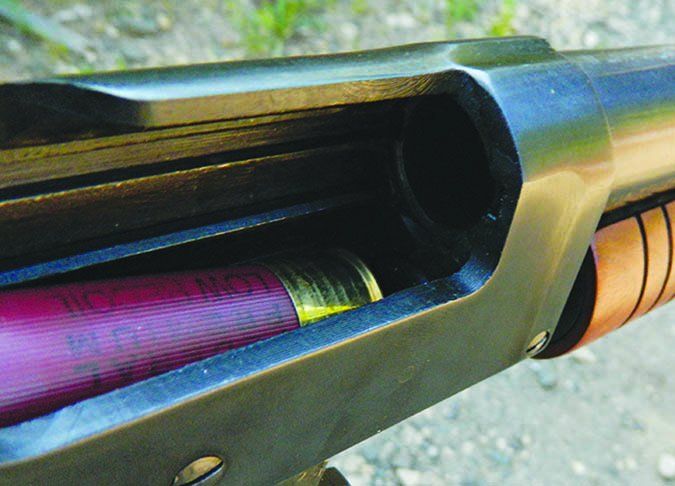
This was our price at Scgunco.com. The very lightly used Norinco exhibited good workmanship, fit, and finish. The receiver and barrel are nicely finished blue. The stock and the forend are finished as well as the Remington. The forend has fewer lines as cocking grooves with wider bands between them than the Remington. The forend isn’t large but works fine with good leverage. The front bead is simply screwed into the barrel. The action operates in the same basic manner as the Remington. There is a difference, however. The Winchester 1897 action the Norinco is a direct copy of requires the pump action be pressed slightly forward to unlock after firing. Usually all that this needed is the firing action’s recoil. This was more noticeable in dry fire. The Wild Bunch shotgun has an exposed hammer, so there is no manual safety. The trigger action broke at 7 pounds, but it was relatively clean and 3 pounds heavier than the Remington. (We have previously tested the same 1897 design under a different logo, the Cimarron Wild Bunch gun, and the trigger broke at 4.75 pounds. This gun, imported by Interstate Arms, has a heavier trigger.) If desired, the hammer may be lowered on a loaded chamber by carefully pressing the trigger and manually lowering the hammer. Next, bring the hammer back to a half-cock notch for safety.
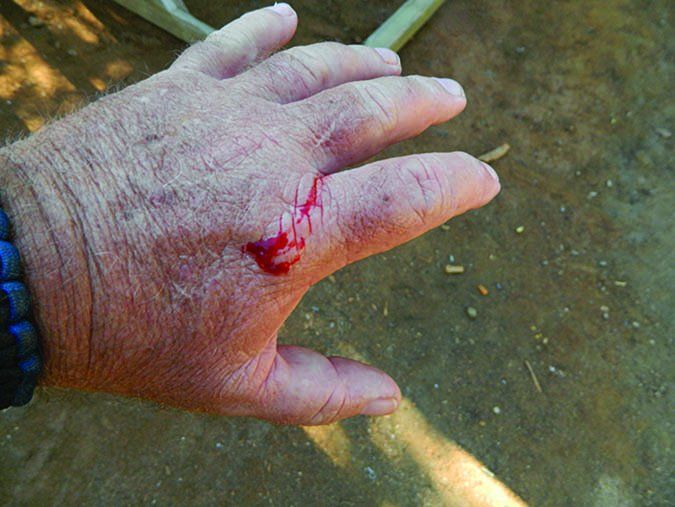
The Wild Bunch shotgun isn’t difficult to load. The loading gate is larger and more generous than the Remington. When loading the two shotguns, the Remington’s shell carrier has to be pushed up in loading, while the Winchester design offers a straight shot when loading shells because the carrier design is different. We rated the Norinco copy of the Winchester 1897 a step ahead in rapidly loading the magazine. In unloading the shotgun, we also gave the Norinco a high mark. When the chamber is loaded, simply press a push button on the right side of the receiver to release the bolt and bring the bolt to the rear. The shell is easily removed from the extractor, and the bolt will shut on an empty chamber as the bolt has not been brought completely to the rear. It is important to not only be able to quickly load the shotgun but to safely unload it, we believe, and the Norinco received high marks. The sole demerit in handling during dry fire was the need to lower the hammer to make the shotgun safe, but some shooters like an exposed hammer. In any case since the shotgun should be kept ready with the chamber empty and unloaded after action or a false alarm, the need to lower the hammer manually isn’t a critical defect. Another advantage of the Norinco is that the magazine holds five shells to the Remington’s four. This is a clear advantage when capacity is already limited. This gives the Norinco a maximum of six shells versus the Remington’s five.
During the live-fire drills, the Norinco was easily racked and made ready to fire. When firing at silhouette targets, the shotgun handled well, and we were able to punish the target with well-directed fire. The extra pound of steel and wood would seem to limit recoil; however, the lack of a recoil pad canceled the advantage. (The previously tested Cimarron also had a recoil pad.)
The Norinco action isn’t as smooth as the Remington. The action required more effort to operate. We discovered another advantage of the ’97 type during the combat drills. The receiver’s shell-ejection port is larger and more open than the Remington. During the rapid replenishment drill, dropping a single shell into the chamber, the Norinco was faster due to the design. It required less dexterity, even for trained shooters, and less effort to quickly drop a single shell into the chamber with the Norinco.
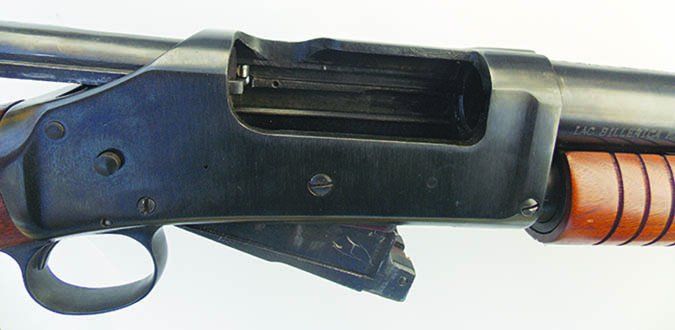
When the action is operated, the shell carrier drops below the receiver. The bolt protrudes beyond the rear of the receiver at the same time. Naturally, some find this charming and iconic. With this exposed action, it would seem that the Winchester 1897 action copied by Norinco in the Wild Bunch shotgun would be more vulnerable to foreign matter and jamming. Yet the design does not have a reputation for anything but rugged reliability in action for its entire service life, and the Norinco seems comparable. Due to the age of the design, parts supply may be a concern and the more modern accessories and accoutrements are not available for the Norinco. This is something to consider, but the shotgun proved reliable and capable of making solid center hits with the buckshot used. Patterns were good, perhaps due to the slightly longer barrel. Firing slugs with a bead-sighted shotgun isn’t a recipe for accuracy; however, the Norinco proved accurate enough for defense use. Against dangerous feral dogs and the big cats and small bears, either shotgun gives users a fighting chance. The Norinco was more accurate than the Remington with slugs, but then this differs among shotguns.
The Norinco also has a design feature that set it apart from the Remington. There is no disconnect. This means that if you keep the trigger pressed and pump the action, the Norinco will keep firing as long as there are shells in the action. We debated the value of this trait and decided to give it a test in addition to the regular test fire. We simply fired each shotgun as quickly as possible to empty the magazine. At the first try, we were not certain we were in control of the Norinco, but at the second try, firing at a 7-yard range, we found that we could fill the target with holes very quickly. Even experienced shooters firing the Remington conventionally, waiting for the trigger to reset after each shot, could not match the Norinco’s speed. We fired each shotgun from below shoulder level and found the Norinco fast indeed. This is kind of a stunt. Perhaps a takeover robbery or gang action might present a need for this type of fire. It is an interesting option.
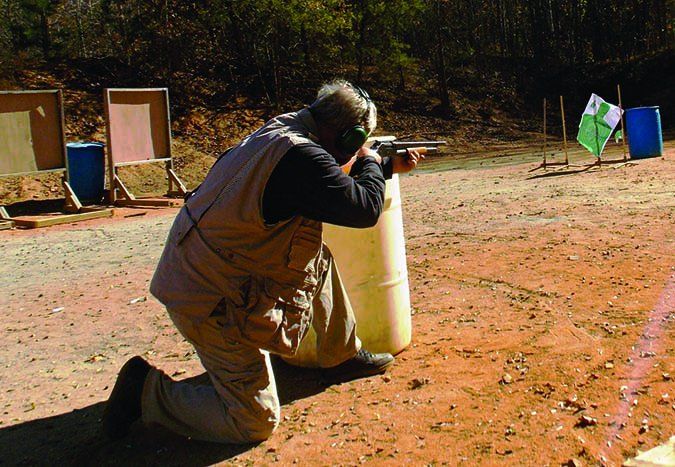
The need to pull the forend about 1/8 inch forward to unlock in dry fire is simply different; some raters did better than others. We also found that the Norinco will benefit from grease in the long bearing areas. Disassembly of the Norinco is limited to the magazine tube, where the Norinco is a copy of the solid-frame Winchester 1897 and the barrel is permanently screwed into the receiver for practical purposes. This doesn’t make maintenance particularly difficult, but it makes the shotgun less versatile. In contrast, replacement barrels with greater length and choke tubes are available for the Remington, but then these are economy guns that are not likely to be upgraded. During the test, the Wild Bunch shotgun exhibited a single malfunction. Firing the last Federal slug, the spent case flipped in the air and landed back in the action, with the brass head toward the chamber. We tugged it out. One rater noted that if we had not left the action open on the last shot this would not have occurred, or not during a normal loading sequence. Perhaps true, and an odd thing to happen, but a malfunction is defined as an action that is not desirable and which may impede function. A rater also cut his knuckle on the bolt when holding the shotgun in the left hand and racking the bolt. The hand was not in a proper firing grip, but then this would not have happened with the Remington. As a result of these occurrences, we rated the Wild Bunch gun down a grade.
As far as shotshell performance we think the Winchester 97 clone might have an advantage, but it would be wise to test a few loads for the most consistent performance. The results were clearer in slug performance, with the Wild Bunch giving a better showing.
Our Team Said: In overall performance, the Wild Bunch gun was faster to load and also faster in the tactical loading portion, shoving a shell in the chamber to do a fast chamber load. Speed was a close tie. Both shotguns were fast, but the Remington was smoother. The Wild Bunch gun did not bind; it simply seemed to require more effort. We rated the bead on a post front sight of the Remington superior, but when it came to shooting, it wasn’t better than the Wild Bunch gun.
Two telling problems brought down the Norinco’s score. First, one of the raters ran afoul of the bolt and picked up a cut. Sure, it was operator error in one way, but in another it could be avoided with a more modern design. We did not like that an ejected shell landed in the ejection port. That generous port that made loading easier in a tactical sense may also invite such missteps. So, in the end the Norinco Wild Bunch shotgun earned a B grade. It is clearly a formidable shotgun. Anyone using the Wild Bunch shotgun in Cowboy Action shooting would certainly be well armed and fast and efficient in a home-defense situation. But the Remington 870 cost less and never stuttered. We rate this a good shoot out, and the Remington earned its Best Buy award.
Written and photographed by R.K. Campbell, using evaluations from Gun Tests team testers.

























